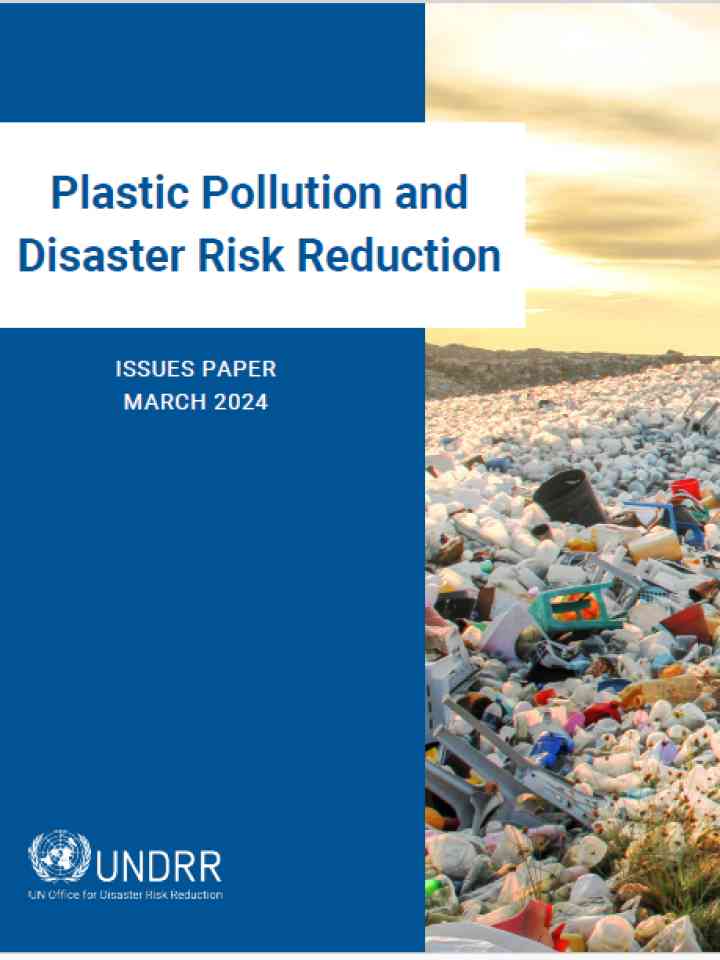Plastic pollution and disaster risk reduction
This paper highlights the interlinkages between the downstream stage of the plastic lifecycle and disaster risk, analysing: the impact of plastic pollution on ecosystem resilience; the impact of plastic pollution in accumulation zones; the increase in vulnerability due to plastic pollution; and the impact of disasters on plastic pollution.
In line with the Sendai Framework for Disaster Risk Reduction 2015-2030, key recommendations to integrate disaster risk reduction consideration into efforts aimed at tackling plastic pollution include:
- Recognizing plastic pollution, in the form of plastic waste and microplastics, as a hazard;
- Taking into account the impacts of plastic pollution on human well-being;
- Considering how plastic pollution might affect ecosystem resilience, and focus efforts on addressing this impact;
- Investing in developing resilient waste management systems, and retrofitting existing waste management systems to increase their resilience to disasters;
- Considering the disaster risk implications in deciding on priority accumulation zones for clean-up efforts;
- Ensuring plastic pollution clean-up activities do not create new risk;
- Addressing risks associated with plastic pollution, including by expanding research on the multifaceted risks posed by plastic pollution to human well-being.
Explore further
Themes
Environment and ecosystems

Number of pages
12 p.
Publication year
2024